How to Budget as a Digital Nomad and Remote Worker (and Save More)
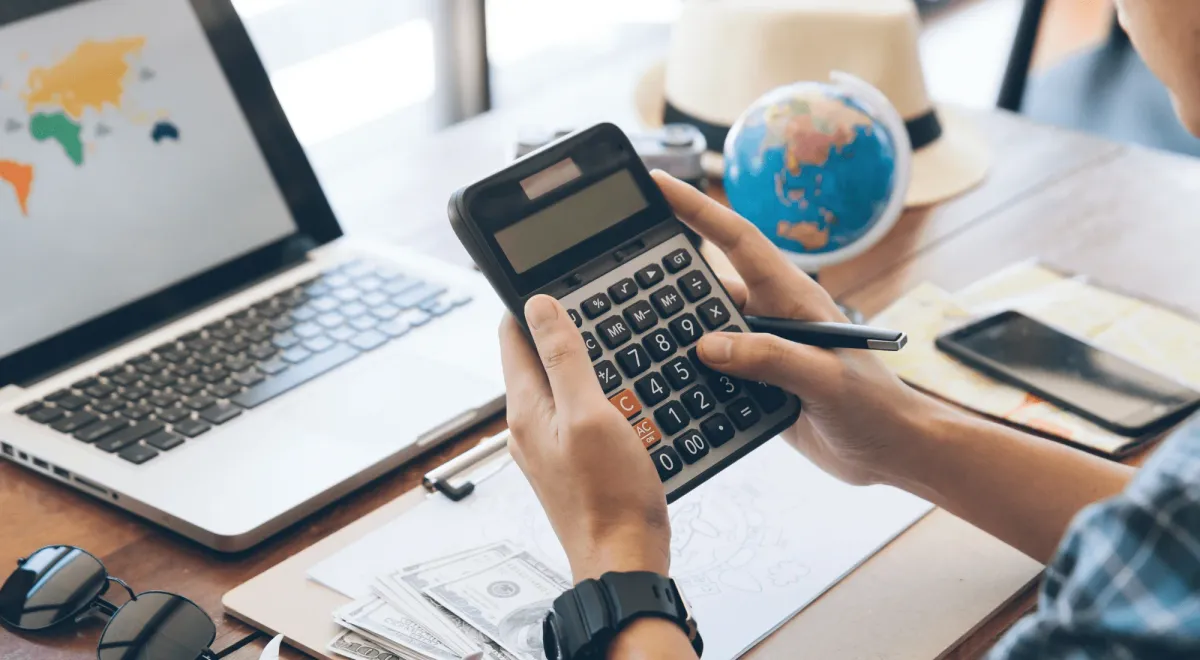
Budgeting as a digital nomad isn’t just a good skill to have—it’s essential for anyone who wants to enjoy the nomad lifestyle long term.
Without a budget, you can easily find yourself in a nightmare situation: running low on funds in a foreign country, without the resources to get to your next destination.
On the flip side, with a good budget in your toolkit, you can make your money last longer, enjoy a richer nomad experience, and build up savings to fund your future, whatever it may bring.
However, budgeting as a digital nomad is inherently different than it would be for people who stay in one place. There is no right or wrong way to live as a digital nomad, but no matter what your situation, you can put together a budget that works for you.
That’s what this article is for; we’ll walk you through how to think about managing your money while traveling, and how to put together a comprehensive digital nomad budget for yourself. Finally, we’ll show you some of our best tips for improving your spending, so you can enjoy a richer life on the road.
Why is Budgeting as a Digital Nomad So Unique?
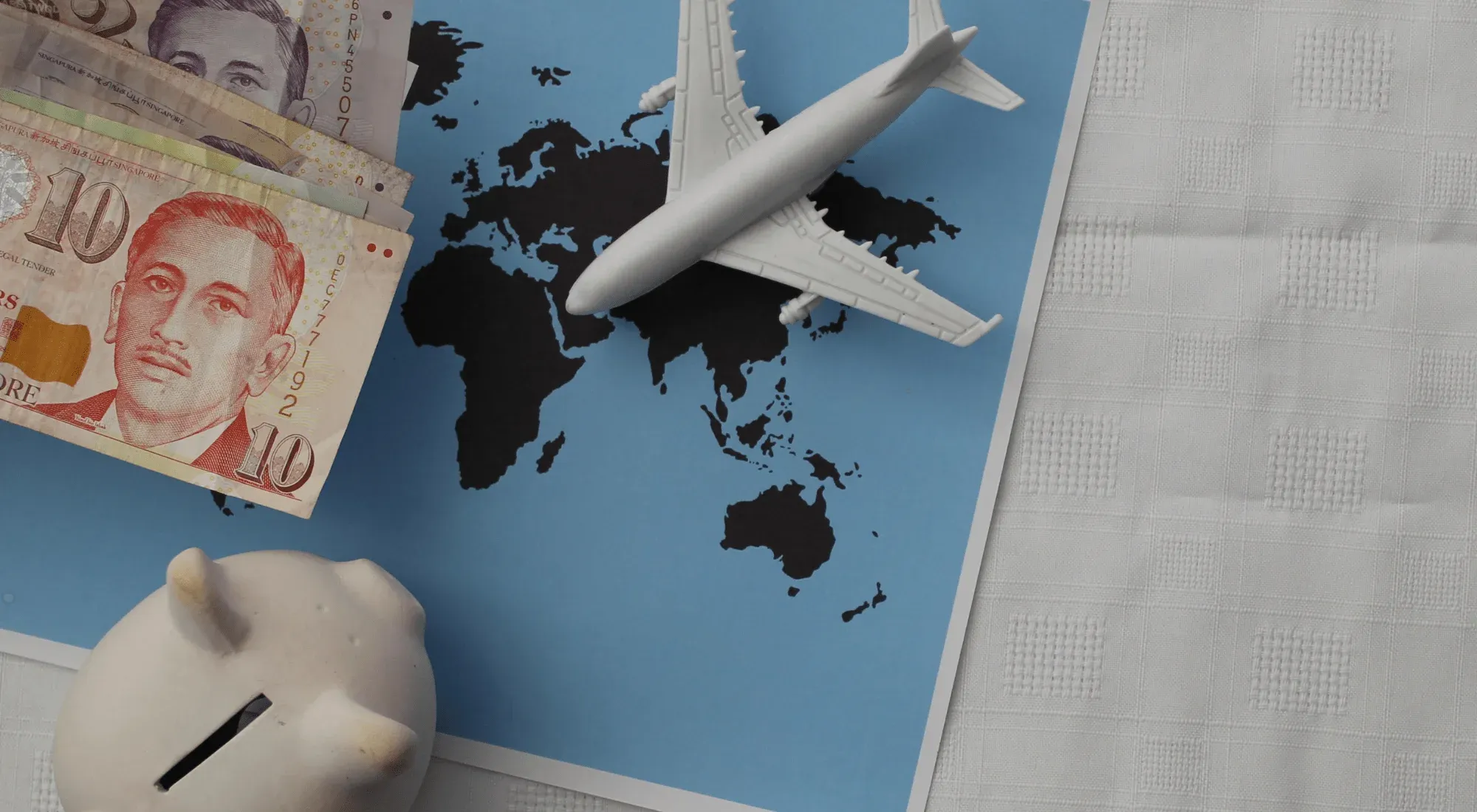
There’s no shortage of articles out there explaining how to put together a budget. But most of these don’t work for digital nomads, because they are based on the assumption that the reader lives in one place and earns roughly the same paycheck week to week.
Digital nomads don’t operate under either of these assumptions. We swap out rent payments for hotel bills, and depending on what you do for work, you may have big changes in your income month to month (not to mention changes in the value of the currency in your wallet!).
On top of that, if you’re working for yourself or running a business, you can add on all the complexities of digital nomad taxes.
Then there are the unique expenses that digital nomads have, which most people don’t: frequent flights, international phone plans, regular visits to tourist attractions, just to name a few.
It’s easy to see why digital nomads can quickly lose track of where their money is going. But that is precisely why a budget is necessary—even if it has to be a bit more flexible than what your friends and family back home are using.
How to Set Up Your Digital Nomad Budget
Ready to put together a budget? Here’s a step-by-step walkthrough of how you can get started.
1. Choosing the Right Bank
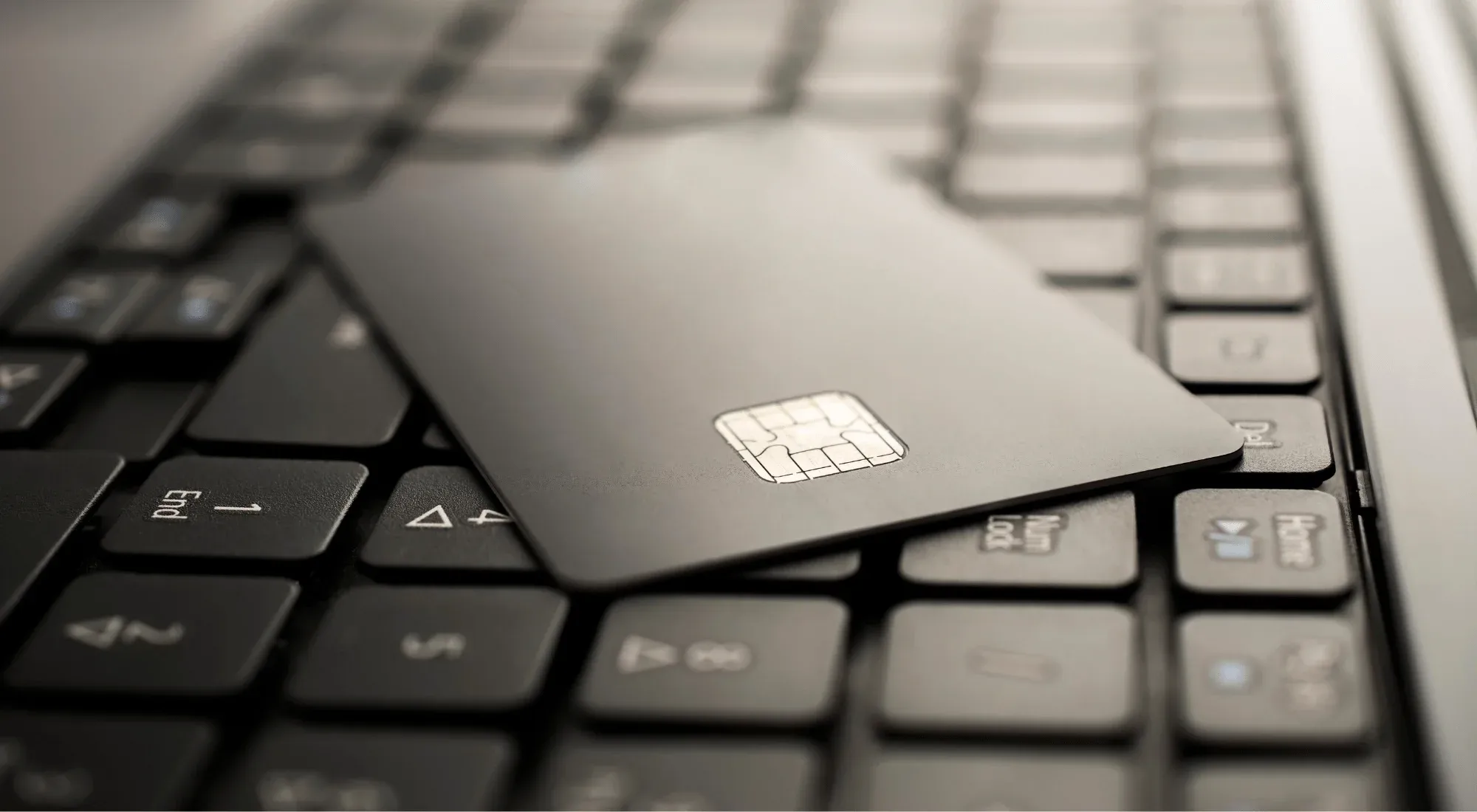
A healthy bank account is the cornerstone of any budget—and once again, there are specific criteria to consider when looking for the best banks for digital nomads.
The most important consideration is the bank’s ability to serve you overseas. As you’re shopping around, keep these questions in mind:
- What foreign ATMs or branches are available overseas?
- What ATM fees will you be charged to take out money abroad?
- Does the bank have 24-hour, human customer service?
- Is it easy to review your accounts on a mobile app/website?
- Does the bank partner with any foreign banks?
- Does the bank offer currency exchange benefits?
- How easy is it to order replacement cards overseas?
- What fraud protection does the bank offer?
- Does the bank require you to inform them every time you travel? (Many banks no longer require this, thanks to automated technology.)
Finally, take a look at the interest rates you get on the savings account at the bank.
Ideally, with a good digital nomad budget in place, you’ll be able to start saving, and higher interest rates will work in your favor. You can always choose to save money in a high-interest account, and use a different bank for day-to-day transactions.
If you are unsure on which bank account to choose, check out our review of the best digital nomad banks out there:
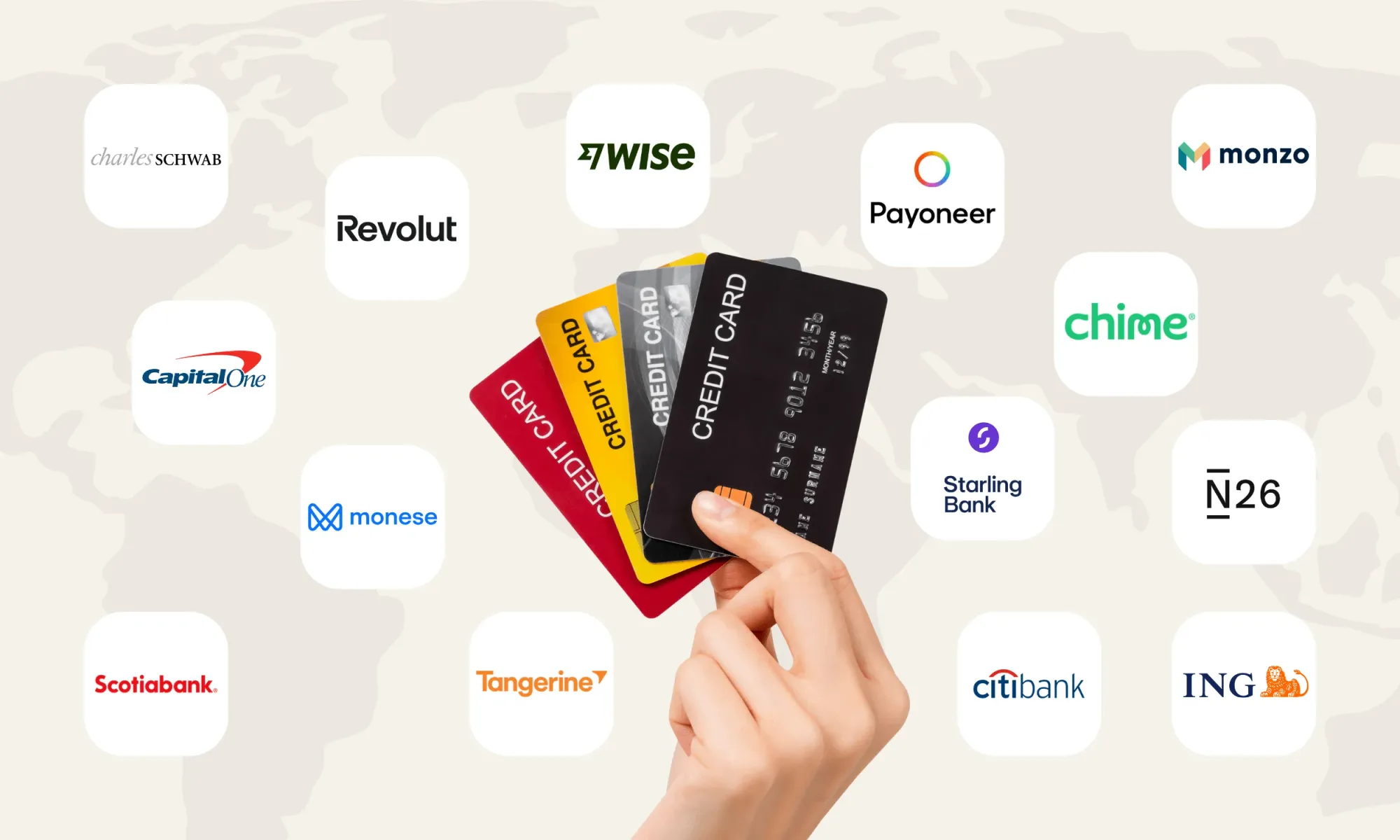
2. Creating a Digital Nomad Budget Tracker
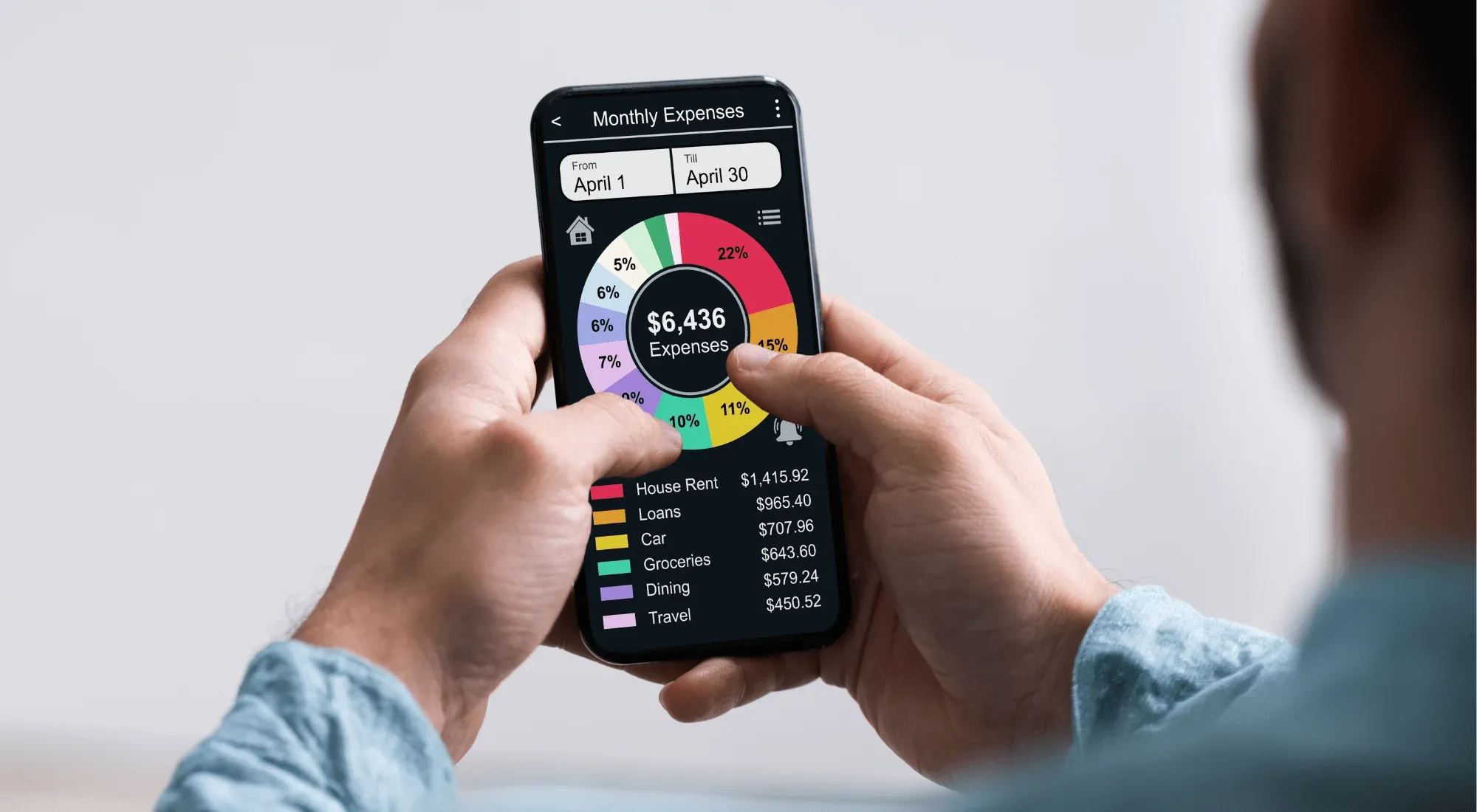
The idea behind a budget tracker is to give yourself a simple way to visualize where your money is going. Think of it like looking under the hood of the car—it makes it easier to see where you can make adjustments to get more out of your income.
There are lots of tools that help you manage a budget, and many of them will work well once hooked up to your bank accounts. They allow you to customize your spending categories, which makes it much easier to budget as a digital nomad.
But you may also decide that you want to go the old-fashioned route and set up a budget tracker of your own on a spreadsheet, which you can update each week or month.
If so, start by creating a list of typical expenses. You’ll need to tailor your own list, but here are some expense categories to consider:
Example budget for digital nomads
| Expense | Total Spent this Month |
|---|---|
| 🥖 Groceries | $xx.xx |
| 🏨 Hotels/hostels/AirBNBs, etc. | $xx.xx |
| ✈️ Transportation (Flights, Trains, etc.) | $xx.xx |
| 🏢 Coworking | $xx.xx |
| 📱 Mobile phone | $xx.xx |
| 🧑⚕️ Insurance | $xx.xx |
| 💸 Loan/credit card payments | $xx.xx |
| 🪙 Savings | $xx.xx |
| ✨ Entertainment | $xx.xx |
| 🍽️ Restaurants | $xx.xx |
| 🚌 Public transportation | $xx.xx |
| 👕 Clothing & Shopping | $xx.xx |
| 📳 Software, Apps, and Subscriptions | $xx.xx |
| TOTAL | $xx.xx |
Once you’ve got all of the different spending categories set up, add a separate row for the money you have coming in:
| Income This Month | $xx.xx |
Now, the fun part (or hard part, depending on how you look at it): start filling out each category with what you’ve spent so far.
This is where things can get tricky, because as we’ve established, predicting your expenses and income isn’t easy when you’re a digital nomad.
One solution is to do a retroactive assessment of your spending. Use your bank statements to go back through the last few months of your spending, and pull together averages for each category, and your average income month on month.
If you’re new to digital nomading, then might not have old data to go off of. But at least you’re starting now, so you’ll know right off the bat where your money went your first month on the road, making it much easier to plan ahead for the future.
3. Choosing a Budgeting Method
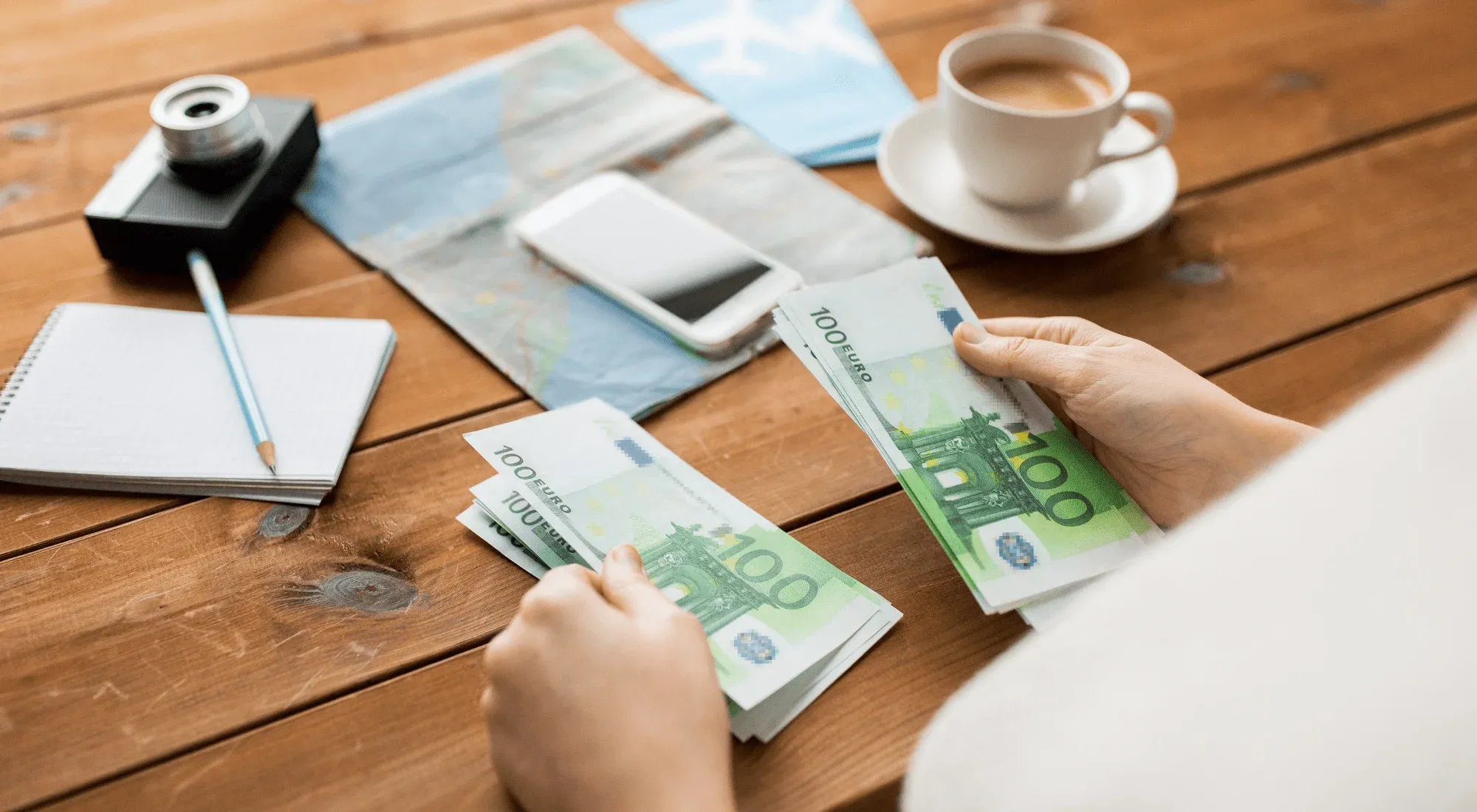
Setting up a budget tracker where you can keep an eye on your spending is a big step in the right direction, but it’s not the last step. Now, you need to try out a few different budgeting "styles" to see which one suits you.
Below are a few of the most popular budgeting methods out there.
The Zero-Sum Budget Style
Imagine a budgeting method where your goal was essentially to empty your bank account each month. That’s what the zero-sum budget is all about, not because you’re spending every dime on frivolous things, but because you put every dollar you earn toward either an expense or into savings, leaving you at a happy, healthy zero in your checking account.
You can apply this to your digital nomad lifestyle using the spreadsheet you put together (or the app you’re using to track expenses). As you receive money in your account, divide it into categories based on what you are likely to spend.
For example, if you get a $1,500 deposit in your bank account, you might dole it out like this:
- $525 set aside for taxes
- $400 for your travel spending
- $250 for loan payments
- $75 for groceries
- $250 remaining goes into savings
The 50/30/20 Budget Style
There’s a good chance you’ve heard of this style of budgeting before, because it’s so popular. It’s an extremely simple way to break up your money and build up savings, without drowning in calculations.
In short, you’ll split your income into three different categories:
- 50% goes to things you need (hotel accommodation, groceries, mobile phone bills, etc.)
- 30% goes to things you want (a shopping trip, massages, special attractions, date night, etc.)
- 20% goes to savings
The Envelope System
The Envelope System is old-school, but it can be adapted for the digital nomad lifestyle. Some people (especially back in the day before credit cards) would parcel their money into different envelopes for different categories of their budget. For example, when you got paid, you might put $100 in your “groceries” envelope, and $600 in your “hotels” envelope, etc.
Obviously, carrying around envelopes full of cash isn't practical for a digital nomad. But you can mimic the envelope system using your spreadsheet or budgeting apps. Set limits for each spending category, and as you make purchases, lower the number in your app/spreadsheet. Once it hits zero, that’s it for the month!
Pay Yourself First Budgeting
If you find it nearly impossible to build up a savings account, then this budgeting style may be best for you.
With this method, the first thing you do after getting paid is transfer a set percentage of your funds into savings. Everything else, you spend as you like. This will ensure that you don’t burn through your money before you have time to stash some of it away.
4. Reducing Your Spending as a Digital Nomad

Maybe you want to start putting money into spending. Perhaps you’ve got your eye on a fancy resort at an upcoming destination. Maybe you just want to eat less ramen.
Whatever your financial goals are, you can use your digital nomad budget to make adjustments and free up the money you want to set aside. Take a look at your expenses, and determine where most of your money is going, see where you can trim spending.
Below, you’ll find some of the best ways to save on your budget, depending on where you need to cut back.
General Savings Come Down to Location and Timing
As digital nomads we might flock to specific locations because of beautiful beaches, excellent food, or to visit loved ones. But for many seasoned nomads, the locations they choose are influenced by their budget.
Some destinations are more expensive than others, for a variety of reasons. Lower currency rates can make a huge difference, not to mention there are certain cities (like London, Sydney, New York, etc.) that make simply existing an expensive activity.
Destinations with many tourists are also bound to be more expensive, and the cost of visiting destinations can shift dramatically based on the time of year. So avoiding destinations during busy seasons is a great way to save on travel overall.
If you find you are routinely missing your financial goals, and you can’t pinpoint any singular spending categories that are causing the issue, then the problem may be the “when and where” of your itinerary. Being a bit more intentional about your travel plans could be the ticket you need to make your budget work harder.
Cutting Back on Transportation Expenses
For most digital nomads, the biggest expenses are those that get you from point A to point B. Flights take the cake in most cases, but even train tickets can add up over time.
One of the easiest ways to cut back on flight costs is to use comparison tools, like SkyScanner. You can also use these platforms to find the best days to fly, since it’s typically much cheaper to fly certain times of year or even days of the week.
Flying is typically the fastest but most expensive way to travel, but depending on where you are in the world, you might consider scrapping the flight for a train or bus—which could be both cheaper and allow you to see more sights along the way. You can check the best train routes using Trainline and bus routes using Rome2Rio.
If you plan to do a lot of train travel in one region of the world, research whether there are passes that give you a discount. You can do the same for public transportation options—for example, it may be more affordable to buy unlimited subway rights for a month if you plan on using it a lot, rather than paying for each individual trip.
Reducing the Cost of Accommodation
After transportation, your biggest bill as a digital nomad is likely to be where you sleep. And depending on what you require to get a good night’s rest, your expenses can vary wildly.
It goes without saying that hostels are typically the cheapest option, especially if you don’t mind sharing a room with other people. And the best way to find them is using platforms like Hostelworld.
If you prefer your own room, however, expect to dedicate more of your budget to booking private rooms in a hostel (the cheapest option), or hotel rooms, Airbnbs, or short-term leases (typically more expensive). The cheapest way to find them is using sites like Agoda or Booking.com.
If you are flexible about what kinds of accommodations you have while traveling, consider adjusting where you stay based on your location. In more affordable destinations, you can splurge for a hotel room, while sticking to hostels in pricier parts of the world.
You can also look into options like house sitting, couch surfing, or home swapping—there are digital communities and platforms set up to make all of these options easier, so they’re worth looking into if you want to tighten your budget in this area.
Enjoying the Digital Nomad Lifestyle on a Budget

Just because you are using your budget doesn’t mean you can’t enjoy the many pleasures of being a digital nomad, like trying new restaurants, seeing exciting attractions, or even enjoying a luxury experience every once in a while.
But if you find you’re spending too much money on the “fun stuff,” there are ways to continue enjoying the travel side of digital nomad life without going broke.
There is no shortage of free or low-cost activities for you to enjoy while abroad. Going to the beach, taking a self-guided walking tour, enjoying the views on a long hike—all of these things cost zero dollars, and they’re all part of what make the digital nomad experience worth living.
Unless you’re in a very remote area, there are likely free events happening that you can enjoy. Local libraries and community centers or colings and cowowkings are great places to find out about what’s going on, but you can also get tips from other nomads by joining groups on social media or sites like EventBrite.com, Reddit, or Meetup.com.
Of course, not everything you’ll want to do while traveling will be free. But you can still find ways to make the costly stuff more affordable. For example, many museums have free or low-cost days, and cities often offer discount cards that give you access to many of the local hotspots at a lower rate. And if you still have a student ID, you can likely find even more opportunities to save on attractions and activities.
Credit cards: A double-edged sword for digital nomads
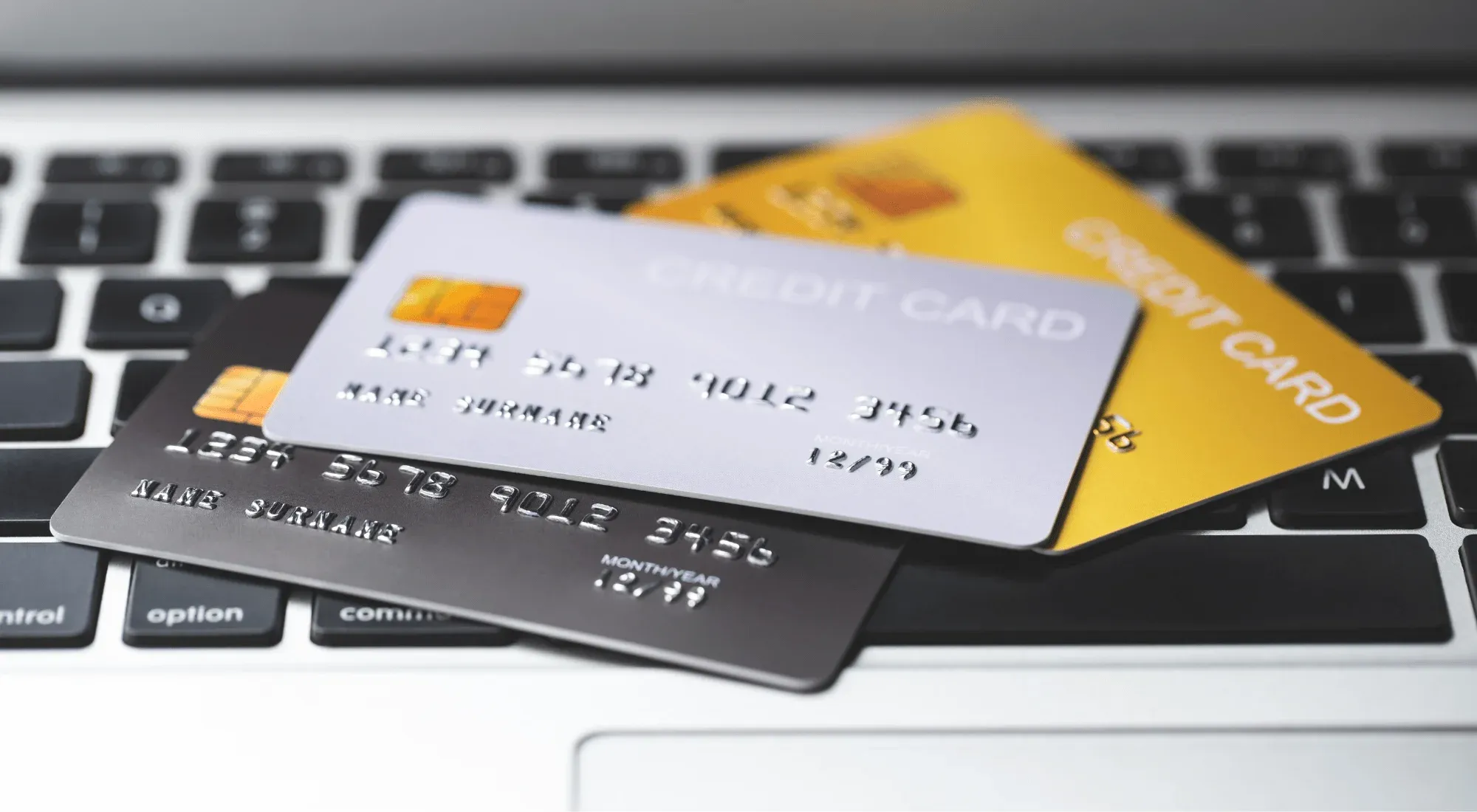
Before we wrap up, there’s one more important consideration when it comes to budgeting as a digital nomad: credit cards.
You may have met digital nomads who swear by their credit card points, using them to get “free” or deeply discounted flights and other perks. And there’s no denying the fact that when used correctly, credit card points can help you save on your budget.
That being said, if used incorrectly, credit cards can end up crashing your digital nomad budget altogether. You may be tempted to use the credit card for everything just to get points, or at least cover expenses you can’t afford right now. This can lead to carrying a large balance, one that accrues a lot of interest and quickly eats away at all the money you intended to save.
Here’s the golden rule: if you aren’t 100% certain you can pay off your credit card balance in full every month, before the due date, don’t get one.
If you think you have the discipline to use a credit card without carrying a big balance, then take your time choosing the right one. Consider the interest fees you’re charged and the benefits you’re offered. If you are already loyal to a specific airline, look at their options to see how they compare to more generic cards on the market.
And if at any point you find yourself pulling out your credit card more often than you should, put it in the bottom of your suitcase until you’ve managed to pay off the balance.
You don’t have to be wealthy to enjoy the digital nomad lifestyle, but you do need to know how to manage your money. With a flexible budget in place, you can find the best methods to make the most out of your digital nomad lifestyle, and keep living the dream as long as you desire.
Ready To Enjoy Your Next Nomad Adventure?
If you want more digital nomad guides like these, sign up for our free newsletter and get upcoming articles straight to your inbox!
You can also follow us on Instagram and join our Facebook Group if you want to get in touch with other members of our growing digital nomad community!
We'll see you there, Freaking Nomads!
About the Author: Liam Carnahan
Liam Carnahan is a digital nomad, SEO specialist, and coach for freelancers who want to earn more and work less. Check out Liam’s free resources for freelancers, sign up for his newsletter, or contact him directly on LinkedIn or X.
Freaking Nomads is supported by you. Clicking through our links may earn us a small affiliate commission, and that's what allows us to keep producing free, helpful content. Learn more




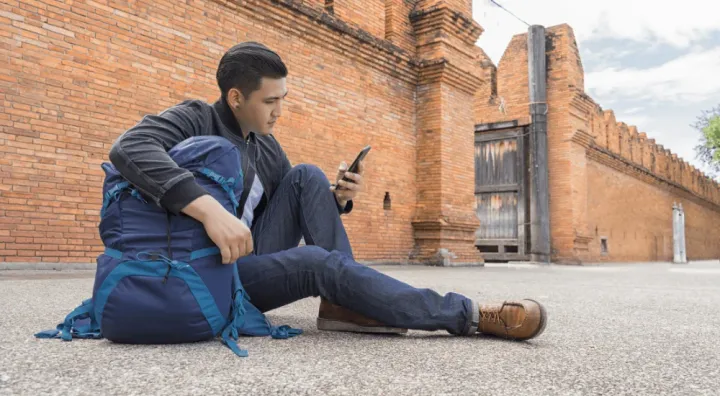


 Travel tips, hacks, and news
Travel tips, hacks, and news Exclusive travel discounts
Exclusive travel discounts Offers and promotions
Offers and promotions Digital nomad inspiration
Digital nomad inspiration Latest articles form our blog
Latest articles form our blog
Comments ()